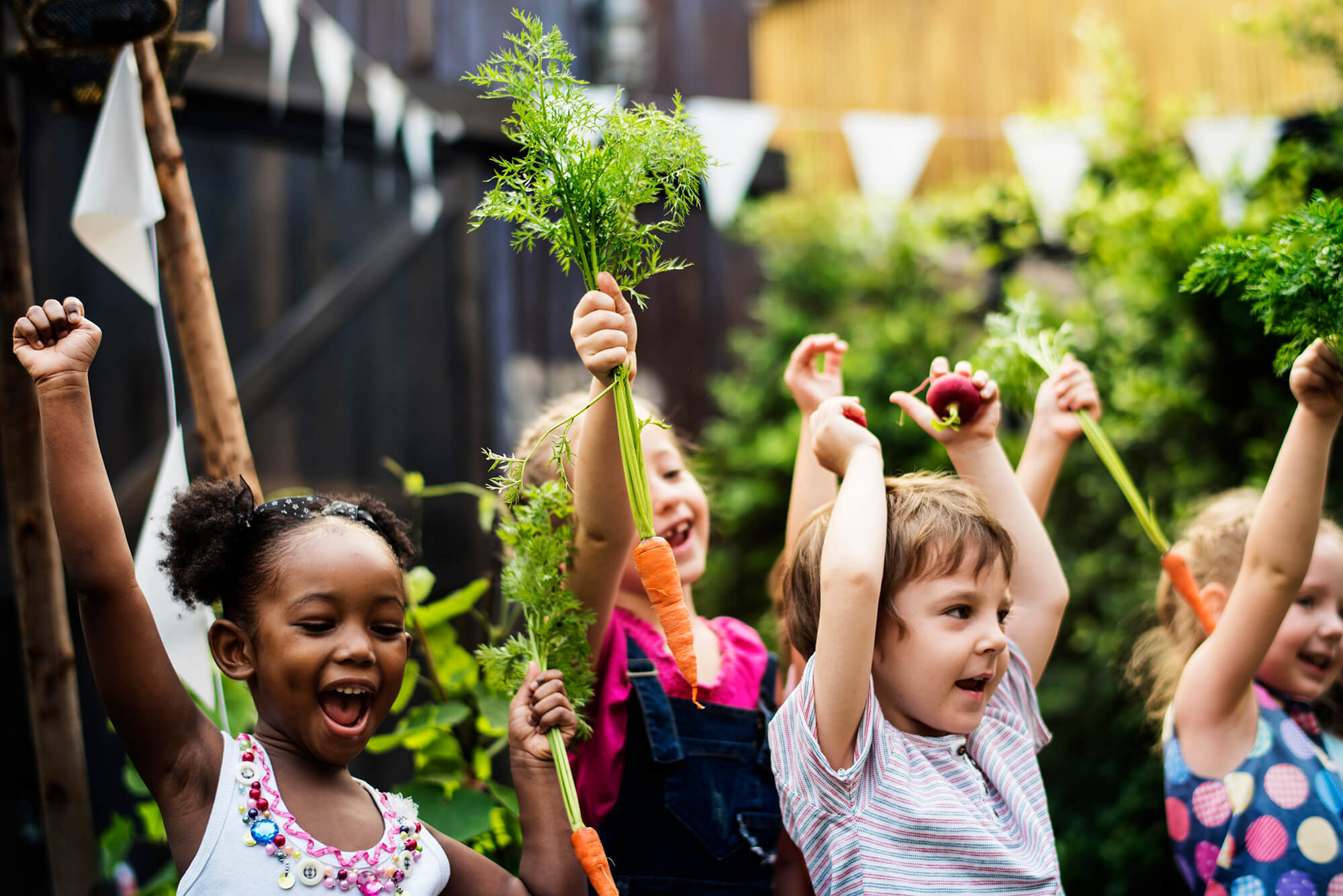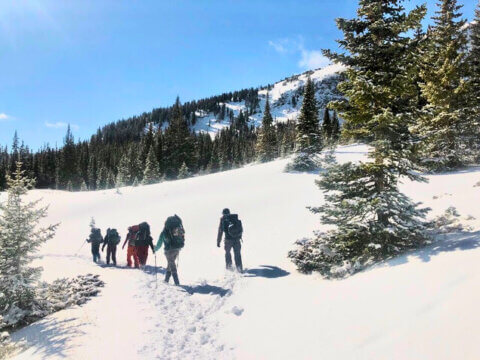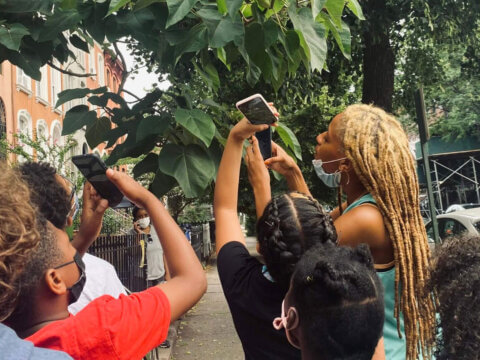Cities take the lead in transforming schoolyards with nature to help kids thrive
After a year of remote learning, closed playgrounds and a lot of uncertainty, schools and students across the U.S. are looking forward to the return of in-person learning. For many communities, one of the biggest lessons of the past year was the role that outdoor spaces can play in supporting children’s learning and well-being. An extensive body of research supports this, indicating that green schoolyards can enhance children’s physical and mental health and academic performance, as well as the health and well-being of the surrounding community.
“Ultimately, the case for green schoolyards and outdoor learning has never been stronger than during the pandemic,” says Jaime Zaplatosch, Director of Green Schoolyards for Healthy Communities for the Children & Nature Network. “They provide safer outdoor options for learning and play, and much-needed spaces of respite and calm for youth and adults alike.”
Armed with this knowledge, ten U.S. cities are taking action to create safe, nature-filled schoolyards by joining a new Green Schoolyards Technical Assistance Cohort led by Cities Connecting Children to Nature (CCCN), an initiative of the National League of Cities and the Children & Nature Network. Through this three-year peer learning and technical assistance program, city and school district leaders will leverage green schoolyards for outdoor learning and a wide-range of community health and environmental benefits. These leaders also see greening schoolyards as a way to improve school infrastructure.
Green schoolyards developed through this initiative will be used for outdoor learning and play during the school day—and be available to children, families and surrounding neighborhoods during out-of-school time. The effort will prioritize schools in neighborhoods that lack access to parks and greenspace.
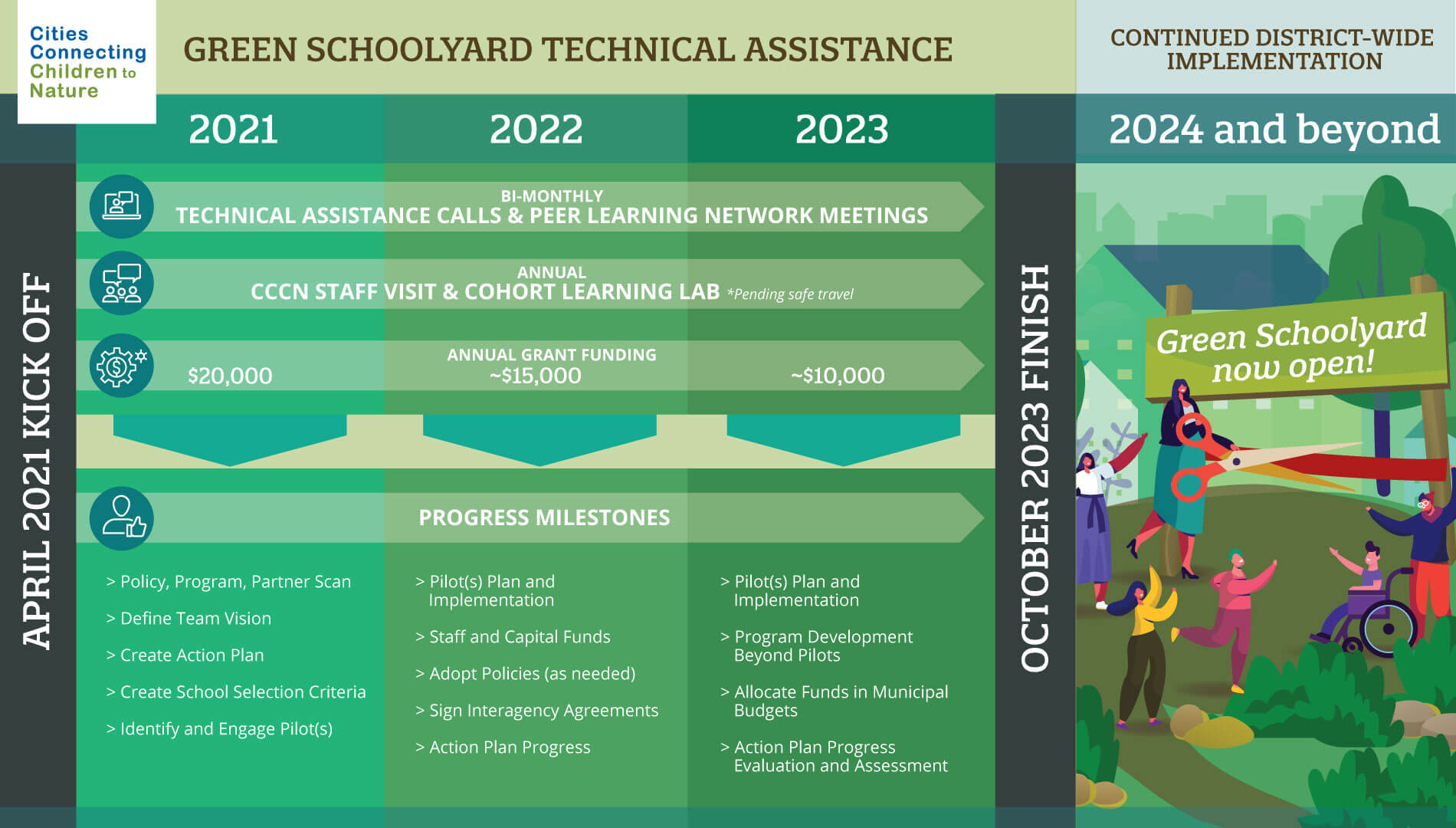
Interest in green schoolyards is growing nationally; 27 cities applied to be part of the Green Schoolyards Technical Assistance Cohort. The ten cities chosen to participate are now assembling teams of school district, city, park, non-profit and community leaders to receive training and technical support from national experts over the next three years. The teams will map local assets—such as schoolyards, community partners and funding opportunities—to create green schoolyard implementation plans.
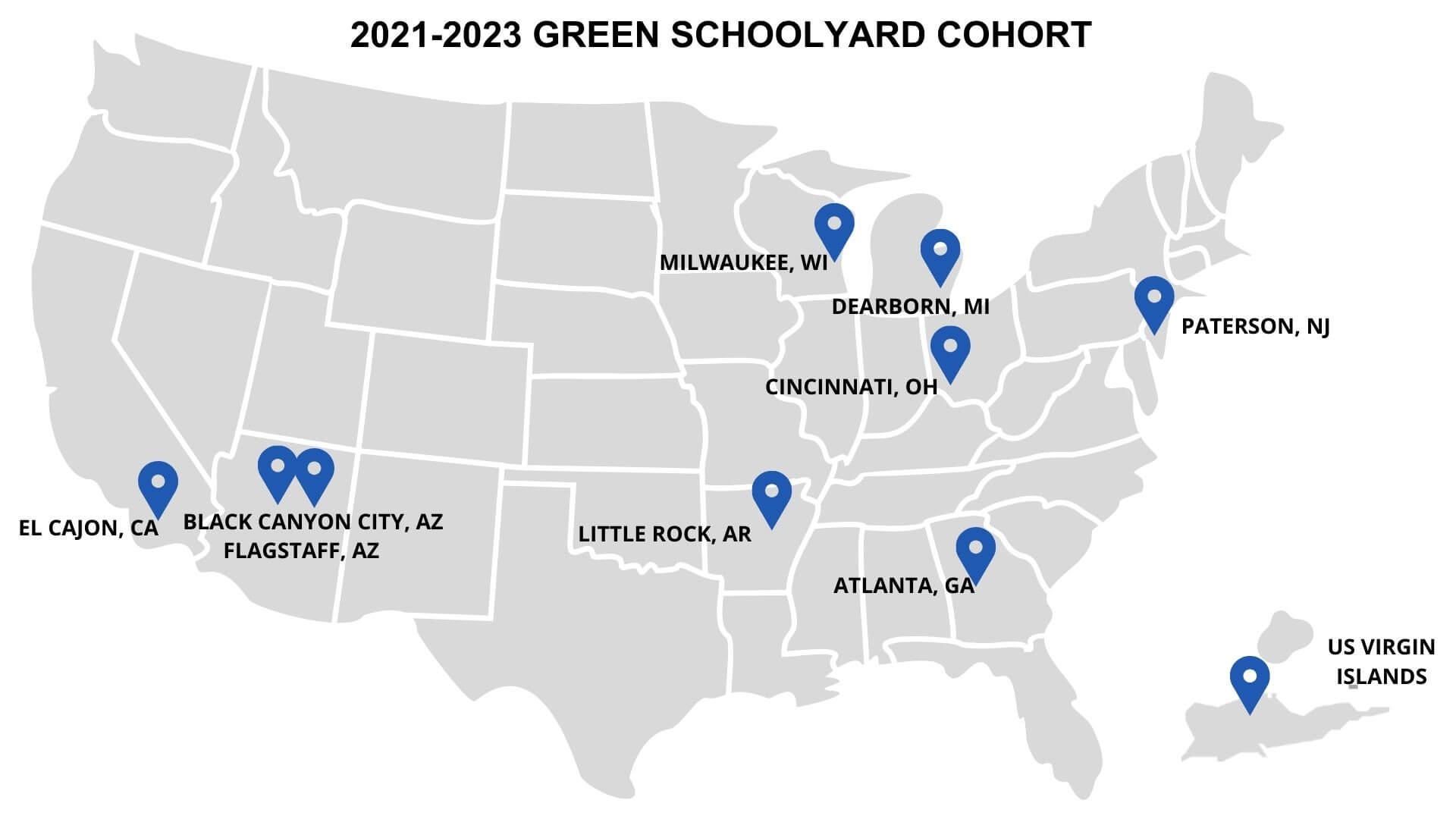
- Atlanta, GA hopes to expand the Atlanta Community Schoolyards Initiative beyond its pilot phase. The partners are interested in using green schoolyards to improve 10 Minute Walk to a Park access goals and expand outdoor learning opportunities.
- Black Canyon City, AZ is a small, rural community. The city is facing unique water conservation and community engagement issues that green schoolyards have the potential to address.
- Cincinnati, OH is using momentum from a coalition supporting outdoor learning in Cincinnati Public Schools to launch into green schoolyards from a strong equity lens. There are also many opportunities to engage youth and corps programs to support development and stewardship of their green schoolyards.
- Dearborn, MI has a strong environmental justice focus and a focus on supporting immigrant communities. The city and district already have equity as an established, key selection criteria for determining which schools to support in their initial phase.
- El Cajon, CA is a densely developed, highly ethnically diverse community that has the potential to serve as a model in California for increasing park access through schoolyards. The city has a strong school/city partnership, with a lot of momentum, and committed leadership.
- Flagstaff, AZ brings a strong First Nation focus based on its residents and location. It also has unique frontline climate concerns from fires, flooding and landslides. Since it is at a higher elevation, it can demonstrate new possibilities for schoolyard usage across the country.
- Little Rock, AR is focused on piloting their green schoolyards program at Community Schools. The team brings strong leadership centered around schools, bringing a local perspective and community focus.
- Milwaukee, WI has been implementing green schoolyards with stormwater mitigation for many years. Their aim is to create a districtwide vision that creates an opportunity to to reach sustainable funding and long-term support.
- Paterson, NJ has a newly published Parks Master Plan that includes green schoolyards and park access as primary goals. The team is hoping to address crime prevention through environmental design of their schoolyards.
- The U.S. Virgin Islands has adopted the use of U.N. climate and child principles, and are in recovery from two major hurricanes. They are bringing their unique governance structure, as well as ecological and economic dynamics to the cohort.
These ten cities join an additional 18 CCCN cities who are leading the nation in bringing the benefits of nature to all children—regardless of race or income—through a variety of strategies, including green schoolyards.
The Green Schoolyards Technical Assistance Cohort is led by a team of CCCN nature connection experts, including the Green Schoolyards for Healthy Communities team:
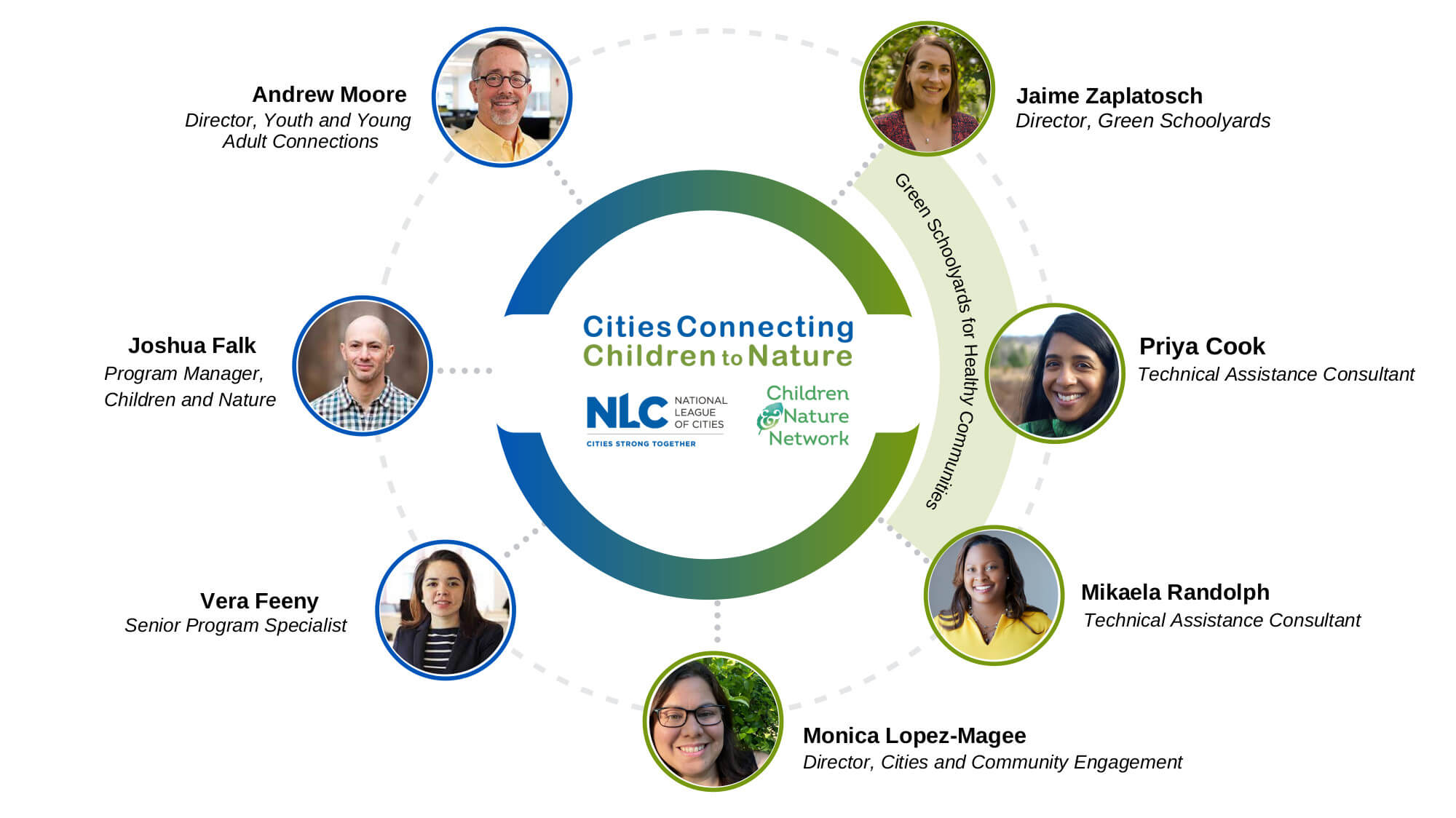
“We know that green schoolyards help kids do better, and feel better, at school,” says Jaime Zaplatosch. “We have scientific evidence to prove it, but visit any school where children can play and learn surrounded by nature and you’ll see it first hand. Through this national technical assistance cohort, we can accelerate the growth of green schoolyards across the U.S. and bring their benefits to more children and communities, with equity as our focus.”
The Children & Nature Network offers a robust set of tools to support the planning, design, programming and ongoing maintenance of nature-filled schoolyards. Two key resources to help communities get started include:
- Green Schoolyards Toolkit: Let’s Get Started! These tools and resources will help you envision and implement green schoolyards in your community.
- Green Schoolyards Workshop, April 14, 2021. This workshop outlines the benefits, process, and next steps for developing green schoolyards in any community.
The Green Schoolyards Technical Assistance Cohort is made possible with funding from The JPB Foundation, with additional support from The Arthur M. Blank Family Foundation and smallMatters institute.
Earth Day Spotlight: Cities Use Green Schoolyards to Achieve Local Goals, CitiesSpeak, National League of Cities
Press Releases and Op-Eds:
- City of Little Rock and Little Rock School District Collaborate
- City of Flagstaff and Flagstaff Unified School District Collaborate to Bring Green Spaces to School Grounds
- Opinion: Let’s get students outside this Earth Day, Cincinnati Enquirer, by Ryan Mooney-Bullock, Executive Director of Green Umbrella
-
Network News
Earth Day: Young leaders advocate for change
-
Feature
Nature photographer Dudley Edmondson has a vision for the representation of Black and Brown faces in the outdoors
-
Richard Louv
EARTH MONTH: You're part of the New Nature Movement if....
-
Voices
Placemaking: How to build kinship and inclusive park spaces for children with disabilities
-
Network News
Children & Nature Network founders release report on global factors influencing the children and nature movement


